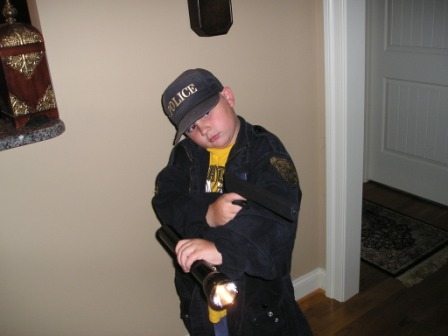Mr. X is a former business professional who committed a crime that landed him in federal prison. He’s out now and has agreed to share his story with the readers of The Graveyard Shift.
Part One
GYS: Thanks for taking the time to share what must have been a difficult time for you and your family. I’ll dive right in. What were the circumstances that ultimately led to your arrest?
X: It’s embarrassing to have to tell it. I’ll start by saying I was ill at the time. I had a mental problem, I guess you’d call it. My doctor gave me all sorts of drugs that were supposed to help me, but didn’t. They just screwed up my wiring—my thought processes. Anyway, to this day I still say I would have never done anything wrong had it not been for the assortment of antidepressants and pain pills. Still, I did what I did and I accept the responsibility for it. I wish I could change it, but I can’t.
GYS: And what was your crime?
X: I bought some cocaine to sell. I needed money. You see, I couldn’t hold down a job and my wife was struggling to make ends meet. The medicine and depression wouldn’t let me think properly. Either I’d get fired, or I’d quit for some crazy, unjustified reason. All I had on my mind was the feeling those little pills offered. At the time, I think I’d have married a bottle of Hydrocodone. I loved the stuff that much.
GYS: How long did your life of crime last?
X: I didn’t make a very good criminal. My entire crime spree lasted about a week. I bought the cocaine to sell, but chickened out. I couldn’t sell it. But someone who was involved in the transaction was already in trouble with the police and told them about me to help themselves out of their own jam.
GYS: Tell us about the arrest.
X: As it turns out, the person who told on me was an informant for a federal task force, so, needless to say, I was surprised when my house was raided by a team of FBI agents along with state and local police. There must have been fifteen or twenty officers involved in the raid of my home. All for a little less than $100 worth of cocaine.
GYS: Seriously, that’s all you had?
X: Yes, sir. $100 worth.
GYS: What were your charges?
X: Possession of a controlled substance (cocaine) with the intent to distribute, and obstruction of justice. The obstruction charge was later dropped. I think the feds automatically add that one to make you confess.
GYS: Why do you say that about the obstruction charge?
X: Well, they threatened to arrest everyone in my family—my wife, kids, and mother—if I didn’t confess. And if I didn’t admit to the crime then they’d let the obstruction charge stand, and that’s a minimum of a ten-year sentence. I had no choice at the time. Plus, they applied this pressure prior to my talking to an attorney, which I understand is perfectly legal. But let me again stress that I was indeed guilty.
GYS: So what happened next?
X: Gosh, it’s all a blur. Let’s see. I was handcuffed, placed in the back of a police car, driven to a remote jail about two hours away, fingerprinted, strip searched, de-loused, and placed in a jail cell. It was a real shock to me. I’d never even had a traffic ticket.
Oh, my family had no idea where I was, or what had happened. They were away when the raid took place—at work and in school.
This was also the time when I learned that I was a drug addict. Withdrawal symptoms set in while I was in the jail cell. The next couple of days were pure hell, for many reasons.
My only contact with humans was through a small slot in the middle of a steel door. I begged for help, but that door wasn’t opened again for three days. I did see a couple of hands twice a day when they shoved a food tray through the slot. But the person wasn’t allowed to talk to me.
Someone, a federal agent, finally came to get me on the third day. He took me to a federal courthouse for a bond hearing. My family was there, but I wasn’t allowed to speak to them. I don’t know how they knew to be there. I was denied bond. Why, I don’t know—this was a first offense, and a $100 dollar offense on top of that. So I was hauled back to the jail cell.
On the ride back, shackled like Charles Manson—handcuffs, waist and leg chains—I realized just how lovely trees, flowers, and the sky really are, even though I was seeing them through a steel screen. I also realized how important my family was. I’d taken a lot of things for granted in my life.
I wound up back at the jail, which I learned also doubled as a holding facility for federal prisoners. I was there for two more weeks until my wife scraped together enough money—$25,000—to retain an attorney to represent me. She had to borrow against the equity in our home. Federal court is really expensive. The attorney managed to get another bond hearing and I was released on my own PR, but I wasn’t allowed to go home with my family. I had to stay with a relative in another city because the prosecutor said I was a threat to my community. For $100 worth of drugs that I never took or sold!
Anyway, I remained there until I went to court.
~
Part Two

Mr. X received a sentence of 37 months, to be served in federal prison, followed by a transition period in a federal halfway house, and 3 years supervised probation.
GYS: You mentioned a couple trips you took while incarcerated. I think the readers would be quite interested in those details. Tell us about the first one, please.
Mr. X: I’m sure you’re referring to my transfer from one prison to another, right?
GYS: Yes. I know you went on other excursions during your time in, but this is one that’s the most interesting, and it’s one our readers probably won’t expect.
Mr. X: Well, the first trip occurred after I’d been in about a year. My counselor called me to his office and said they’d figured my custody status wrong. Originally, they’d housed me in a minimum security prison—one with double fences, guard towers, armed perimeter patrols, and razor wire—but I was actually eligible to serve my time in a camp. He then asked if I’d like to transfer. My response was an immediate yes, if he could find one near my family. Who wouldn’t want to go to a camp? I mean, to go from hell on earth to a place with no fences, no razor wire, better food, better jobs, less guards, and better visiting opportunities. That was an easy decision. A no-brainer.
The arrangements were made in a matter of days. I was going to a camp near my home that’s run by a private security company. At the time, I was in a prison nowhere near my wife because she’d been transferred for work since I was first incarcerated.
I was, however, concerned and apprehensive about the transfer. Those trips can be awful. They chain you up and place you in the back of a hot van, or bus, and haul you to a jet that’s parked in some hidden spot. Then you fly to Oklahoma where you may sit for months before you finally take off for the new place. You may also get shuttled around from county jail to county jail. During that time, you don’t get visits, commissary, work, mail, etc., because no one knows where you are from one day to the next, for months at a time.
Well, that’s what I was expecting, but one of the guys I hung around with a bit—he fancied himself as sort of a jailhouse lawyer—said he’d read that you could apply for a furlough transfer. He went on to explain that it was possible, with the warden’s permission, to actually walk out the gate, hop on public transportation, and make the trip, unescorted.
I figured I had nothing to lose so the next night I approached the warden outside the dining hall and asked him about it. Well, without blinking an eye he said, “Fill out the application and get your plane ticket.”
I was stunned, but that’s what I did (my family made the arrangements). The day of my trip arrived and I still couldn’t believe they were going to let me walk out the gate. At 9 a.m. sharp, though, I was summoned to the main office. It was like a dream. I walked from the office to the front entrance where a guard asked me a few questions and then opened the gates. I walked outside to hugs from family members. They drove me to the airport where I enjoyed a nice meal and a flight across country. The couple seated beside me were pleasant, and I enjoyed a nice conversation with them—about nothing really, but it was wonderful to talk about things other than appeals and how to smuggle an extra dessert from the dining hall. I often wonder how they’d have reacted if they’d known I was a federal prisoner.
We landed at a large airport where I was met by my wife—she was my ride to the camp. We planned the trip so that we’d have a little time together. So we stopped by the house for some much needed “quality” time before making the three-hour trip to the prison camp. I’ll skip those details.
Later, I arrived at the camp with my bags in hand, kissed my wife goodbye, and went inside the office building (no fences, no guards outside, and no gates). A guard at the desk checked me in like I was at a motel. She then told me which building I’d be assigned to and pointed in that direction. I went through the rear door and made my way across a well-manicured lawn and stepped into a nicely air-conditioned building. No yelling, no loud TV’s, and absolutely no guards. Not one. It was like I’d been re-born. I was a new man with a glimmer of hope for my future.
GYS: Your next trip was a bit different, yes?
Mr. X: It sure was. After I’d been in a while I heard about inmates being granted furloughs—weekend trips to their homes to spend time with their family. The purpose of the furlough is supposed to help prisoners gradually become accustomed to outside life with their families. Well, I applied for one and it was approved. I went home for three days during the Christmas holidays, and it was wonderful.
My wife picked me up in the prison parking lot and we spent three glorious days together, at home, before I had to return to the camp. I was walking on air when I got back.
I’d also gone on short day trips, like to trim roses in the town parks, or to the warden’s Ruritan Club to spruce up the grounds. They were nice outings to break up your time and to see some real people, but they were nothing like my time with my family, at home. Still, seeing people and cars and trees and flowers and freedom … well, any time outside the camp grounds was like a dream.
*This article is a repeat post.


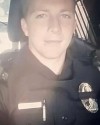




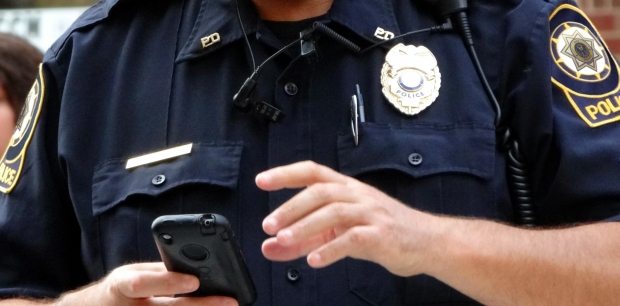

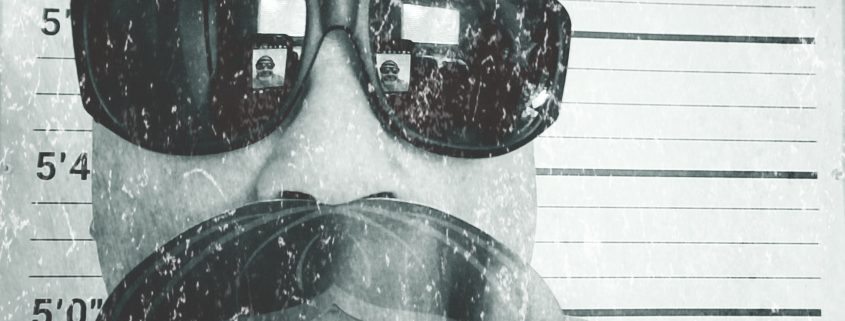



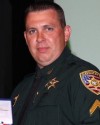

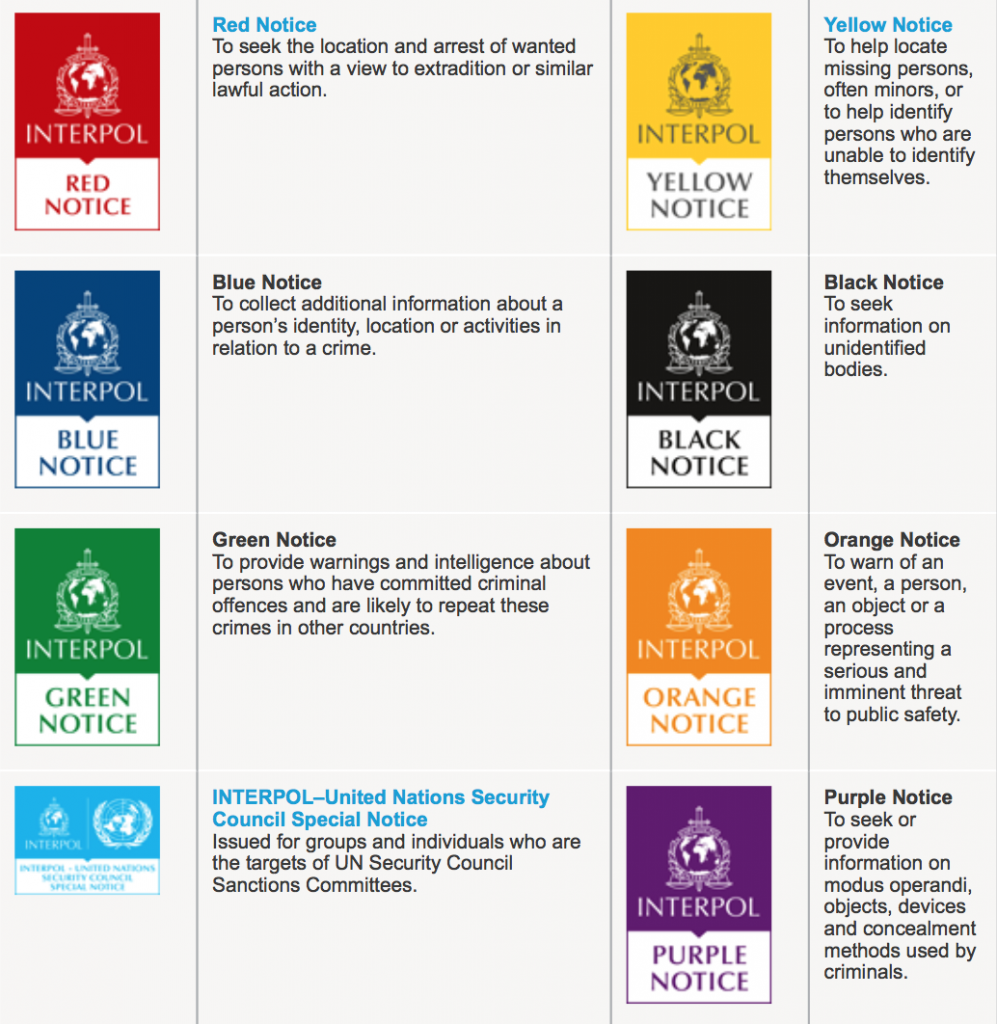
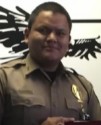


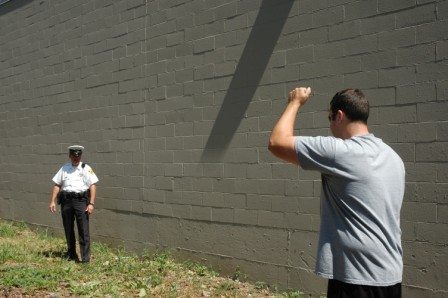
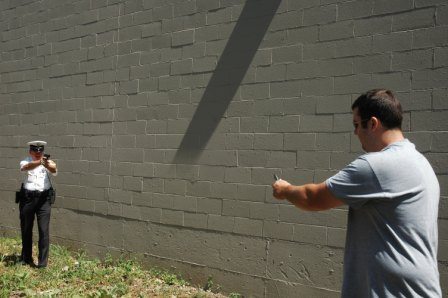

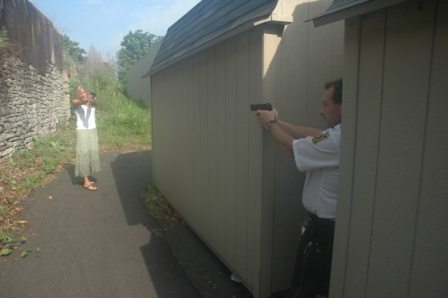
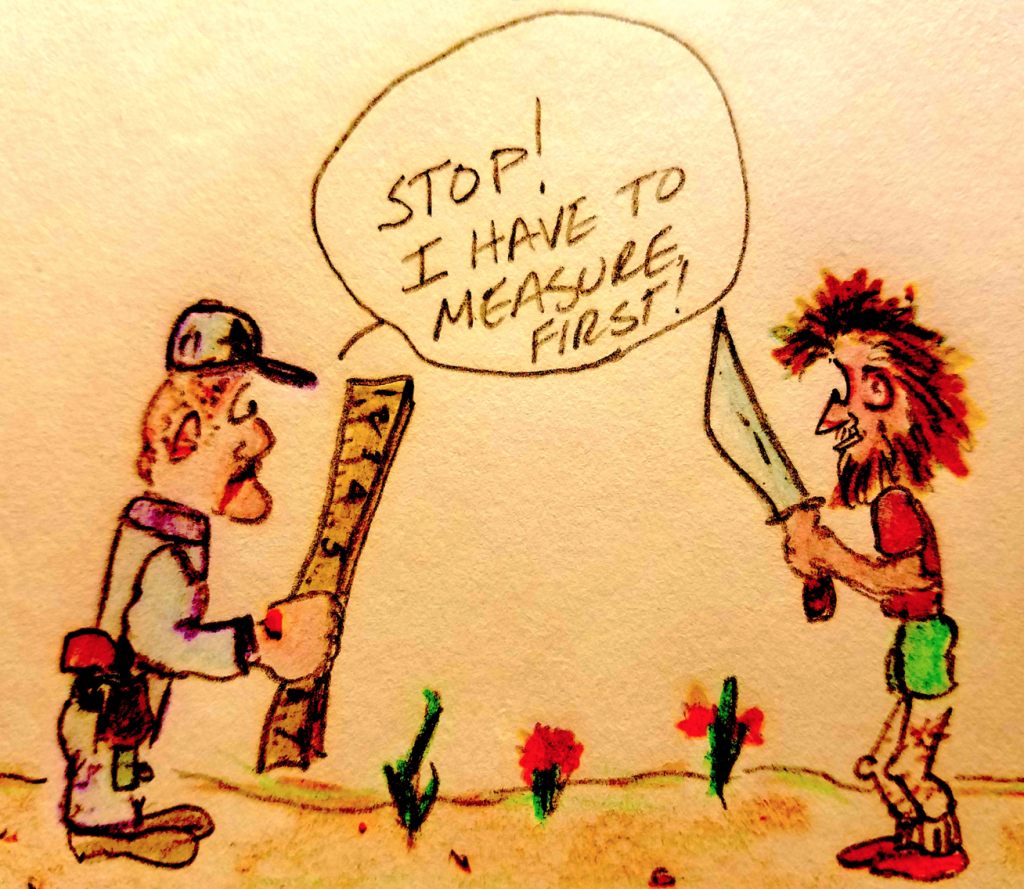
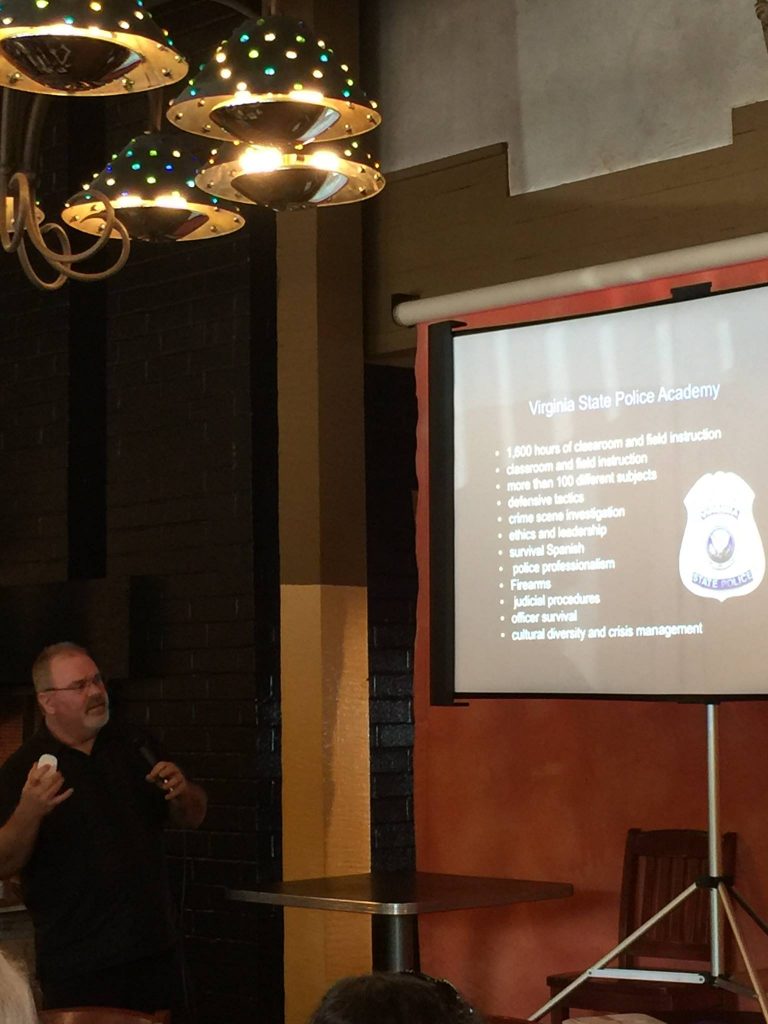





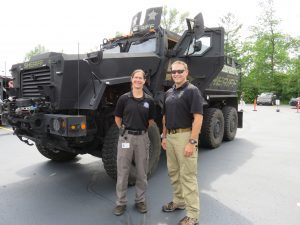 So what do cops do as a front-line defense against all that unnecessary grief? Well, for starters, they’re taught to portray what’s known as Command Presence.
So what do cops do as a front-line defense against all that unnecessary grief? Well, for starters, they’re taught to portray what’s known as Command Presence.
